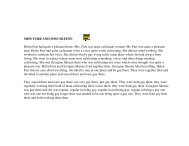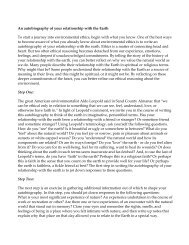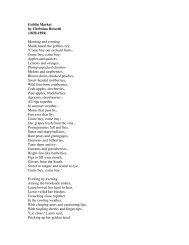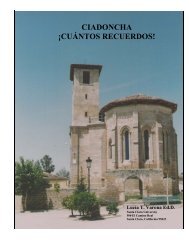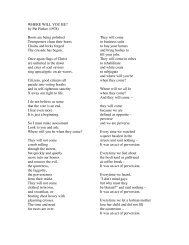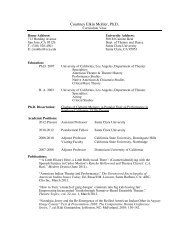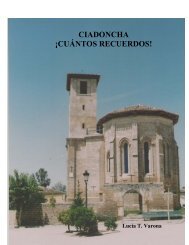ciadoncha; ¡cuántos recuerdos - Webpages at SCU - Santa Clara ...
ciadoncha; ¡cuántos recuerdos - Webpages at SCU - Santa Clara ...
ciadoncha; ¡cuántos recuerdos - Webpages at SCU - Santa Clara ...
You also want an ePaper? Increase the reach of your titles
YUMPU automatically turns print PDFs into web optimized ePapers that Google loves.
mounted on the backs of the animal, which gave the farmer a good and well deserved<br />
rest. Having the cows do the carrying did not allow for this.<br />
Grazing of c<strong>at</strong>tle. 70s<br />
Photo provided by Federico Varona<br />
One participant told me: “Without animals, agriculture could not be done.<br />
Without animals, nothing could be done. Not a single step could be taken without the<br />
animals, not one single step. Here, tilling was done with cows, mules or oxen until the<br />
coming of the tractors in 1956.” The first tractor was a Lanz 38 cylinders and the start of<br />
petroleum was done by Santos Arroyo. Then came the tractor with a thresher which<br />
belonged to Josemari Queved, and also the first harvester in Ciadoncha and the seventh<br />
one in all of Spain belonged to Nice Madrigal.<br />
Photo exposed in the City Hall of Ciadoncha.<br />
Each family had animals which they worked with. Besides this, there were two<br />
herds of cows, calves, mares, mules, horses or fillies th<strong>at</strong> a shepherd cared for. These<br />
were many people’s animals th<strong>at</strong> they had in the case th<strong>at</strong> something happened to the<br />
animals th<strong>at</strong> were used for work. Moreover, there were <strong>at</strong> least ten or twelve flocks of<br />
sheep, each with its own shepherd and farmyard. In those times, there was a lot of<br />
movement in the town.<br />
135



